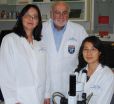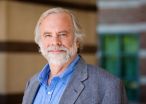Study: Indian government health insurance reduced mortality among the poor
Researchers studied nearly 80,000 households from 600 villages and found a 64 percent drop in mortality from diseases covered by the insurance
2014-10-08
(Press-News.org) A government program to provide health insurance for catastrophic illness to households below the poverty line in Karnataka, lowered both mortality rates and out-of-pocket expenses for the residents, according to a recent evaluation published in the leading global health journal The BMJ.
The program is implemented by the Karnataka government with support from the World Bank Group.
An evaluation of the program, the Vajpayee Arogyashree Scheme (VAS), funded by the World Bank Group and led by Neeraj Sood, professor and director of research at the USC Schaeffer Center for Health Policy and Economics found that:
The risk of dying from conditions covered by the insurance dropped by 64 percent for residents with the insurance.
Out-of-pocket health expenditures for hospitalizations due to the covered conditions dropped by 60 percent.
Utilization of healthcare facilities for the covered conditions may have risen.
http://youtu.be/Ay3PRzBUh9s
"This World Bank study clearly shows how this program benefits the health of the poor in Karnataka," said U.T. Khader, the state's Minister of Health and Family Welfare. "It provides hospital care that the poor would have difficulty receiving without the help of the scheme."
The free insurance covered specific high-impact medical conditions – such as heart disease and cancer – which poor residents often die from because they are unable to pay for the necessary expensive treatments. Some of the unique features of the VAS program includes free tertiary care at both private and public hospitals empaneled by VAS for below-the-poverty-line (BPL) families with little or no access to tertiary care; automatic enrollment of all BPL families with no annual premiums, user fees, or copayments; and health camps in rural areas by empanelled hospitals, which helped screen patients for tertiary care and transport them to hospitals in urban centers.
"The results of this study are important to India as it makes choices on how to make progress towards universal health coverage," said Onno Ruhl, World Bank Group Country Director for India. "The program shows how purchasing health services for the poorest can both improve health and provide protection from impoverishment due to out-of-pocket payments for health care."
The evaluation included more than 82,000 households. Since the program was phased, covering poor households in the northern part of Karnataka in the first phase before expanding to the rest of the state, the study compared the health outcomes of roughly 45,000 households from villages that were covered by the insurance to roughly 37,000 households from villages that were not covered by the program.
"The study shows that public policy can play a strong role in reducing disparities in health due to socio-economic status. In villages without insurance, the poor had much higher mortality than the rich, but such disparities were completely eliminated in villages with insurance coverage," Sood said.
"Rates of early death and illness from chronic conditions – such as heart disease and cancer – have increased dramatically in India in the past few decades, putting the poor at high risk of not having access to services they need and incurring payments for health care that push them deeper into poverty," said Patrick Mullen, a World Bank Group senior health specialist and the manager of the evaluation."
The study was funded by the World Bank Group's Health Results Innovation Trust Fund, which supports innovative results-based financing strategies such as the health service purchasing done by this program. Sood's coauthors were Eran Bendavid from Stanford University, Arnab Mukherji from the Indian Institute of Management in Bangalore, Zach Wagner from the University of California, Berkeley, and Patrick Mullen and Somil Nagpal from the World Bank Group.
Future research on the topic will explore the extent to which insurance programs can improve the quality and appropriateness of care.
INFORMATION:
ELSE PRESS RELEASES FROM THIS DATE:
2014-10-08
The sports media's positive reaction to the hiring of a female referee in professional football is a good sign, according to a Penn State researcher, but did little to help expose deeper issues that hinder greater acceptance of women in sports.
In a study of online stories and posts about the hiring of Shannon Eastin as an NFL official during the 2012 referee's union strike, Dunja Antunovic, a doctoral candidate in mass communications, said that the media mostly celebrated her NFL debut.
"It was generally positive," said Antunovic. "However, it might be a mistake to ...
2014-10-08
COLUMBUS, Ohio – The risk of developing cancer in a salivary gland might be higher in people with mutations in either of two genes associated with breast and ovarian cancer, according to a new study by researchers at The Ohio State University Comprehensive Cancer Center – Arthur G. James Cancer Hospital and Richard J. Solove Research Institute (OSUCCC – James).
Although salivary gland cancer is rare, this retrospective study suggests it occurs 17 times more often in people with inherited mutations in genes called BRCA1 and BRCA2, than those in the general ...
2014-10-08
It is estimated that as many as half of patients taking cancer drugs experience a decrease in mental sharpness. While there have been many theories, what causes "chemo brain" has eluded scientists.
In an effort to solve this mystery, neuroscientists at The University of Texas Health Science Center at Houston (UTHealth) conducted an experiment in an animal memory model and their results point to a possible explanation. Findings appeared in The Journal of Neuroscience.
In the study involving a sea snail that shares many of the same memory mechanisms as humans and a drug ...
2014-10-08
Certain types of corals, invertebrates of the sea that have been on Earth for millions of years, appear to have found a way to survive some of their most destructive threats by attaching to and growing under mangrove roots.
Scientists with the U.S. Geological Survey and Eckerd College recently published research on a newly discovered refuge for reef-building corals in mangrove habitats of the U.S. Virgin Islands. More than 30 species of reef corals were found growing in Hurricane Hole, a mangrove habitat within the Virgin Islands Coral Reef National Monument in St. John.
Corals ...
2014-10-08
CHAMPAIGN, Ill. — A new study offers fresh insights into how talking on a cell phone or to a passenger while driving affects one's performance behind the wheel. The study used a driving simulator and videophone to assess how a driver's conversation partner influences safety on the road.
"We've done years of study on driver distraction, and previous studies suggest that passengers often aren't distracting. In fact, passengers can be helpful, especially if they're adults who have had experience and also are active drivers themselves," said University of Illinois psychology ...
2014-10-08
Peer-to-peer file sharing of movies, television shows, music, books and other files over the Internet has grown rapidly worldwide as an alternative approach for people to get the digital content they want -- often illicitly. But, unlike the users of Amazon, Netflix and other commercial providers, little is known about users of peer-to-peer (P2P) systems because data is lacking.
Now, armed with an unprecedented amount of data on users of BitTorrent, a popular file-sharing system, a Northwestern University research team has discovered two interesting behavior patterns: ...
2014-10-08
Cold Spring Harbor, NY – It's one of those ideas that seems to make perfect sense: the bigger the brain, the more intelligent the creature. While it is generally true, exceptions are becoming increasingly common. Yet the belief persists even among scientists. Most biologists, for example, assume that rats, with larger brains, are smarter than mice. Cold Spring Harbor Laboratory (CSHL) scientists now challenge this belief. They compared mice and rats and found very similar levels of intelligence, a result that could have powerful implications for researchers studying ...
2014-10-08
WASHINGTON - Children who are emotionally abused and neglected face similar and sometimes worse mental health problems as children who are physically or sexually abused, yet psychological abuse is rarely addressed in prevention programs or in treating victims, according to a new study published by the American Psychological Association.
"Given the prevalence of childhood psychological abuse and the severity of harm to young victims, it should be at the forefront of mental health and social service training," said study lead author Joseph Spinazzola, PhD, of The Trauma ...
2014-10-08
AUGUSTA, Ga. – A fundamental theory about how our thymus educates our immune police appears to be wrong, scientists say.
It's known that stem cells come out of the bone marrow and travel to the tiny thymus gland behind the breastbone to learn to become one of two CD4T cell types: one leads an attack, the other keeps the peace.
One widely held concept of why they become one or the other is that, despite coming from the same neighborhood and going to the same school, they are exposed to different things in the thymus, said Dr. Leszek Ignatowicz, immunologist at ...
2014-10-08
Rockville, MD – The Society for Disaster Medicine and Public Health is committed to examining the details of individual disasters and public health crises. With the recent arrival of Ebola in the United States, the journal is launching a special issue on the virus. The journal will serve as an educated and authoritative voice on the virus, risk and threat level, potential of outbreak, preparation and response for the public and media.
The Journal of Disaster Medicine and Public Health Preparedness, began covering events in their entirety via special issues this ...
LAST 30 PRESS RELEASES:
[Press-News.org] Study: Indian government health insurance reduced mortality among the poor
Researchers studied nearly 80,000 households from 600 villages and found a 64 percent drop in mortality from diseases covered by the insurance



